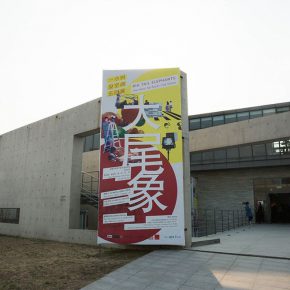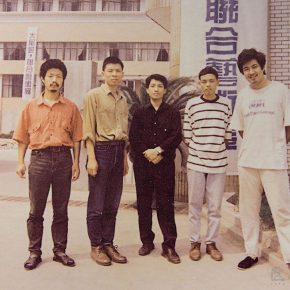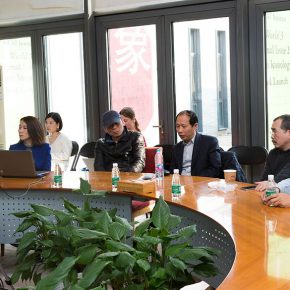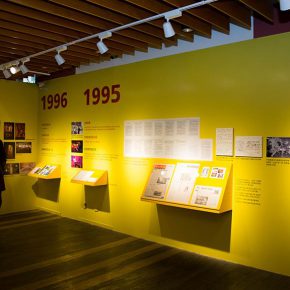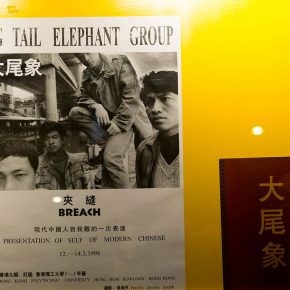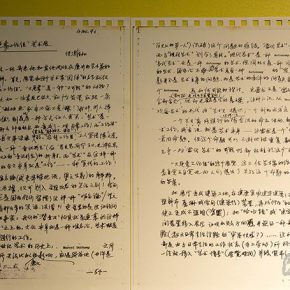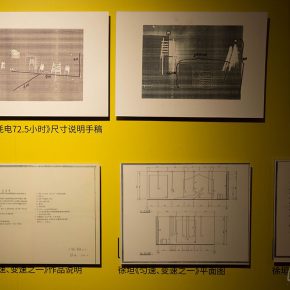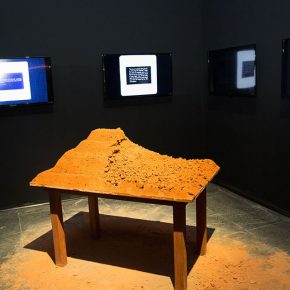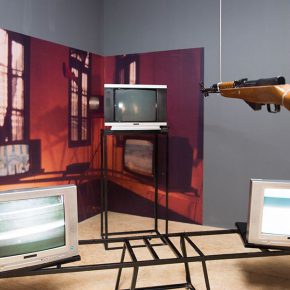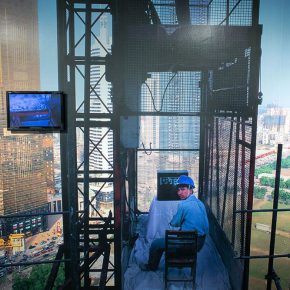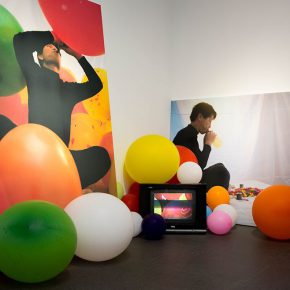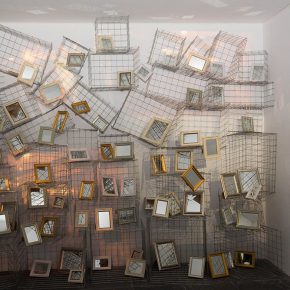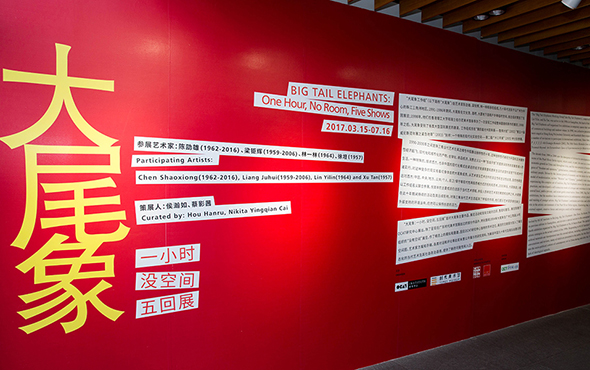
On March 15, 2017, Beijing OCAT Institute launched a show entitled “One Hour, No Room, Five Shows” to finish and review the “Big Tail Elephants Working Group”, and it is jointly curated by Hou Hanru, Nikita Yingqian Cai, based on the “Delta Action the Big Tail Elephants – One Hour, No Room, Five Shows” held in the Guangdong Times Museum last year, it adds some search materials including the exhibition floorplans, artist proposal and sketches, conversations and reviews, many of which are presented to the public for the first time, in order to form a comprehensive review and a research case of the “Big Tail Elephants.”
The “Big Tail Elephants”, comprises of the artists Chen Shaoxiong, Liang Juhui, Lin Yilin and Xu Tan, who were active in the 1990s in Guangzhou, the heart of the Pearl River Delta region. The energy of their artistic creation is diverted from a series of social and cultural reality brought by the reform and opening up, commodity economy and urbanization, and also becomes an independent pioneer art state in the process of Chinese contemporary art. The three key words extracted from this exhibition are the summary of the main artistic activities and artistic states of the “Big Tail Elephants”: “One Hour” refers to Liang Juhui’s performance piece “One Hour Game” (1996), enacted in the elevator of a construction site in Guangzhou, where the artist placed a color TV in the vertical lift and the game of “Tank War”, along with this, the elevator went up and down for one hour, he also crazily played the game for one hour and this “temporary landscape” constituted a “heterotopia” that is against the urgent process of modernization; “No Room” corresponds to the title of the group’s fourth exhibition held in the No.14, Road Sanyu, Guangzhou in 1994, indicating the paucity of institutions and spaces available for the display of contemporary art in the 1990s, while also alluding to the guerrilla-style spontaneity of the group’s exhibition initiatives; “Five Shows” refer to the five shows organized by the Big Tail Elephants in a variety of non-art spaces including cultural palaces, bars, basements of commercial buildings, temporary outdoor spaces from 1991 to 1996.
The emergence and artistic creation of the “Big Tail Elephants” was inseparable from the economic take-off, modernization and urbanization of the Pearl River Delta region in the 1990s, therefore their artistic concerns are closely related to it, and they applied other pioneering art language including installation, performance, video, photography ton the concern of the population of migration, cultural crisis, rapid changes of urban environment and other topics on reality. This exhibition also restores the social and cultural situation at that time, to chronologically show the annual political, economic and cultural events, while the proposals, sketches, drawings, reviews, etc. of “Big Tail Elephants” art activities are interspersed, so that the viewer can clearly see that art ireflects daily life and society, their creations uses the daily mediums and materials to perform the changes of life and ideology felt by them.
Big Tail Elephants was very active in the 1990s, independently plans exhibitions every year, and is also frequently invited by the international exhibitions including Venice Biennale, Gwangju Biennale, Guangzhou Triennial, and they rarely attend an exhibition again in the name of the working group, but the major members are still active in the field of contemporary art, and actively engaged in creation and artistic education. They have played a positive role in the contemporary art ecology of the Pearl River Delta region, so it is instructive to review, finish and study their art. The Curator of the exhibition Hou Hanru mentioned that the art of Big Tail Elephants was persistent, and they have been consistently dedicated to a problem embodying a value and belief; at the same time they are involved in the formation of urban culture, and keeping the sensibility of contradiction and synchronization, which also makes people think of the role and identity of art in the social structure; now the art space tends to “normalize”, while the Big Tail Elephants launched projects and practices in the non-art space also inspires the marginal relationship between current art space and living space. A member of Big Tail Elephants artist Xu Tan has always believed in this set of methodology, to avoid the road of popular “ideology” and “orientalism” at that time, firmly adhering to the best way they found, namely the social practice of art.
The OCAT Institute in Beijing is an art institution focusing on research and speculation, in the last year, Wu Hung curated the exhibition entitled “Exhibition of Exhibitions: Presentation of Contemporary Art in the 1990s”, observing the functions and meanings of exhibitions, artistic activities and contemporary art in China, as well as the relationship with the community, etc., and “Big Tail Elephants: One Hour, No Room, Five Shows” is also a continuation and supplement of the same topic, and it forms an horizontal comparison. The exhibition remains on view till July 16.
Text and photo by Zhang Wenzhi, translated by Chen Peihua and edited by Sue/CAFA ART INFO


